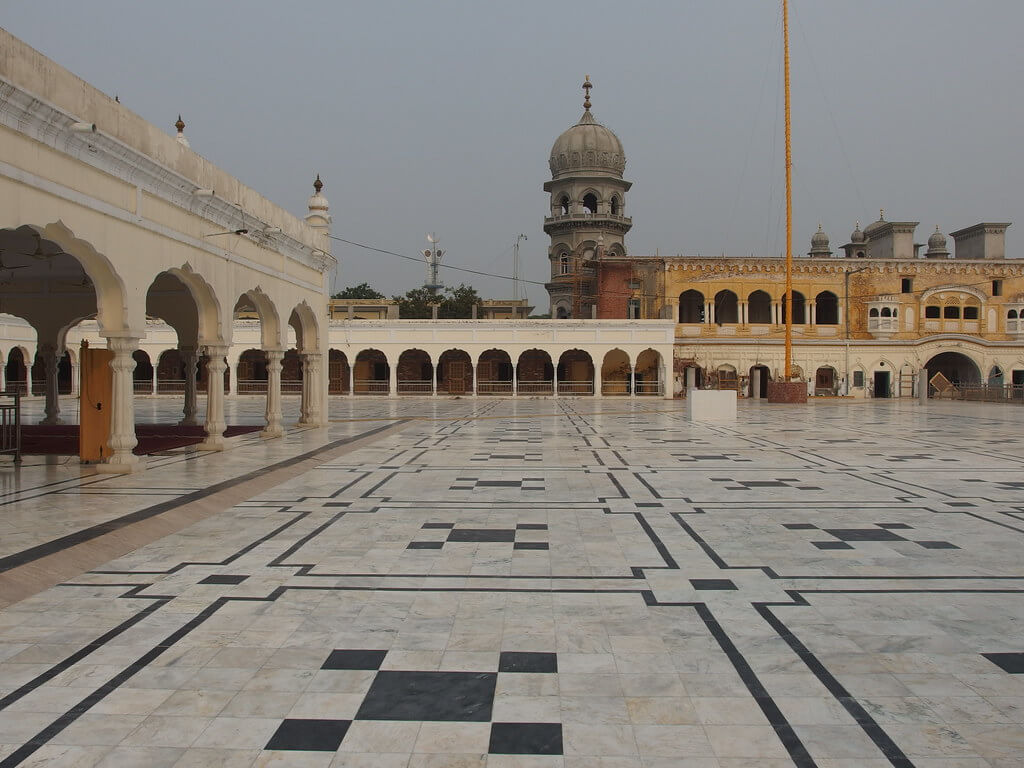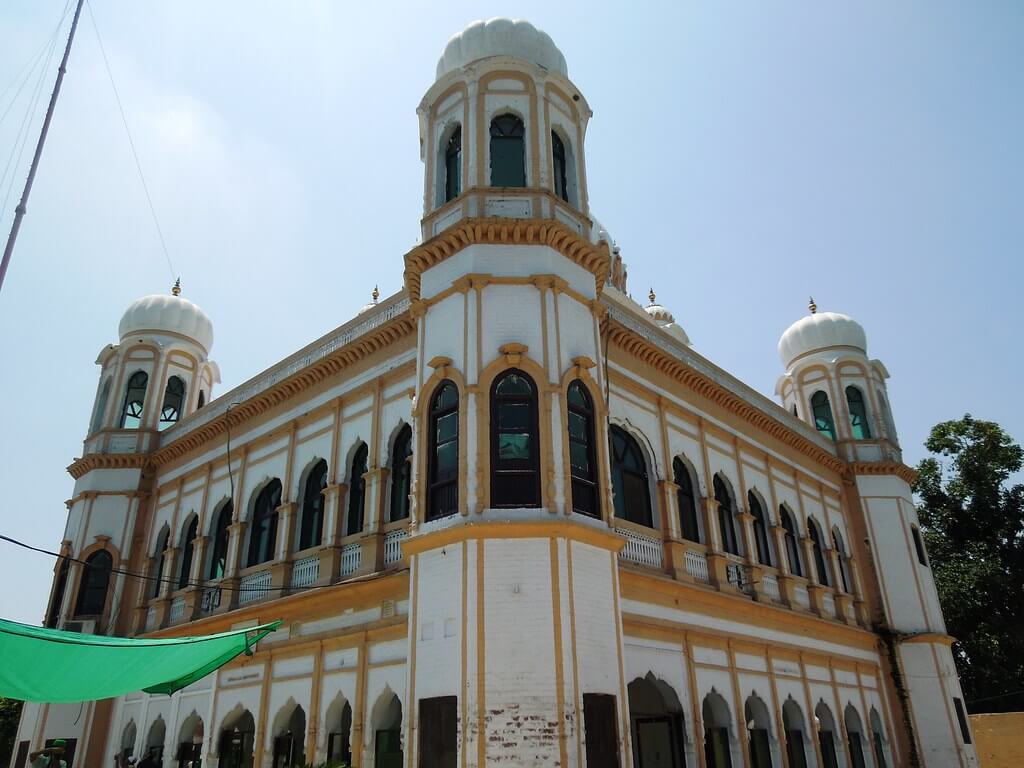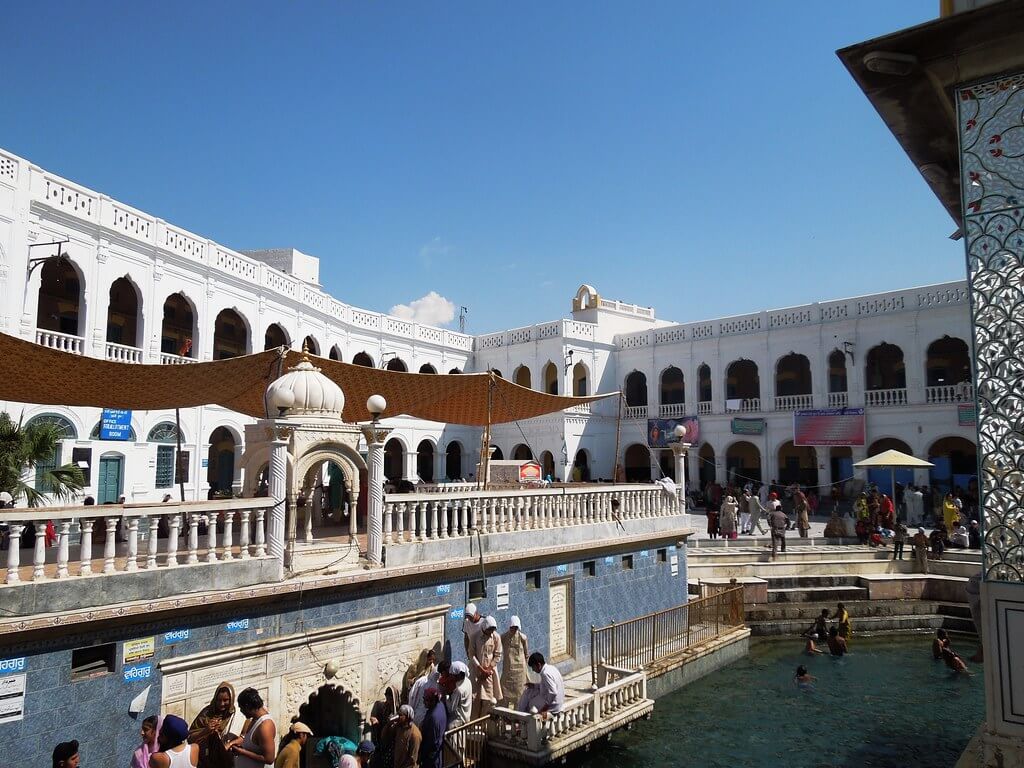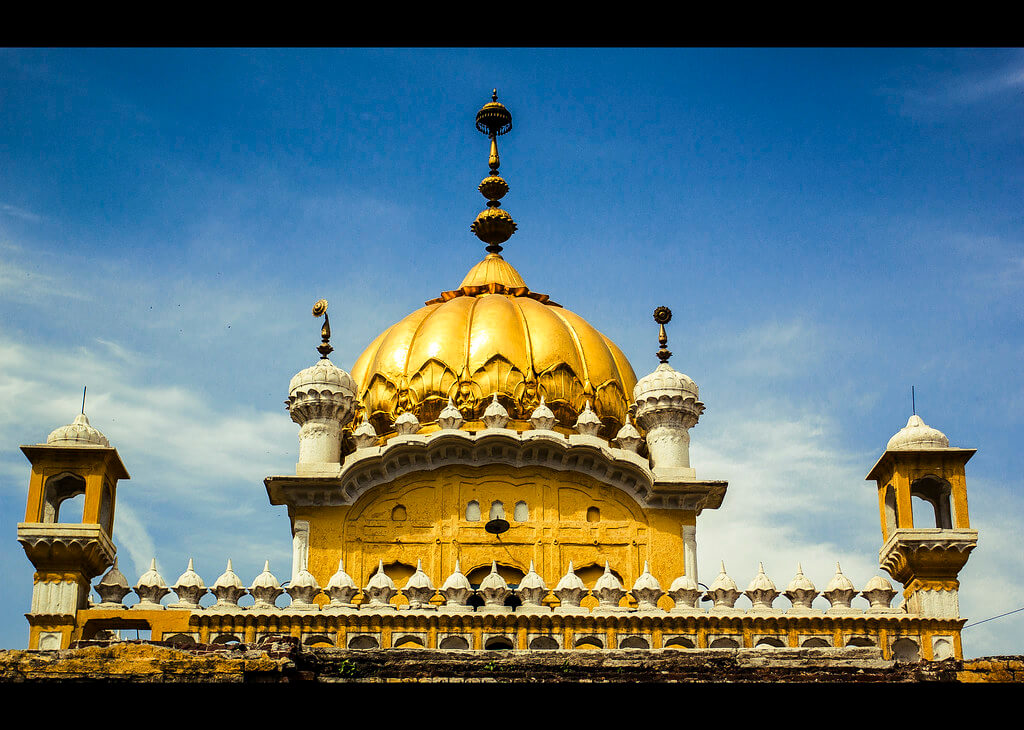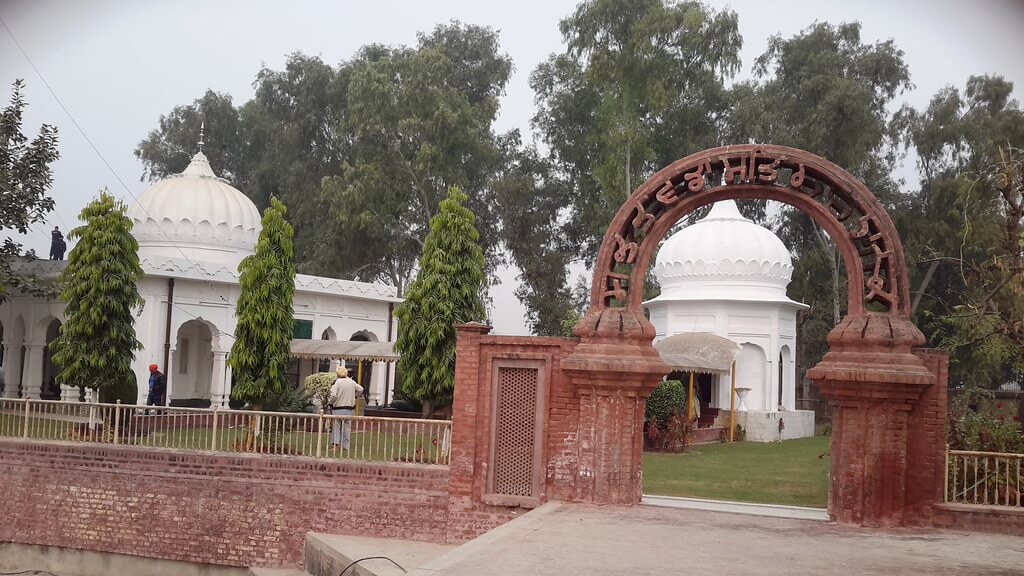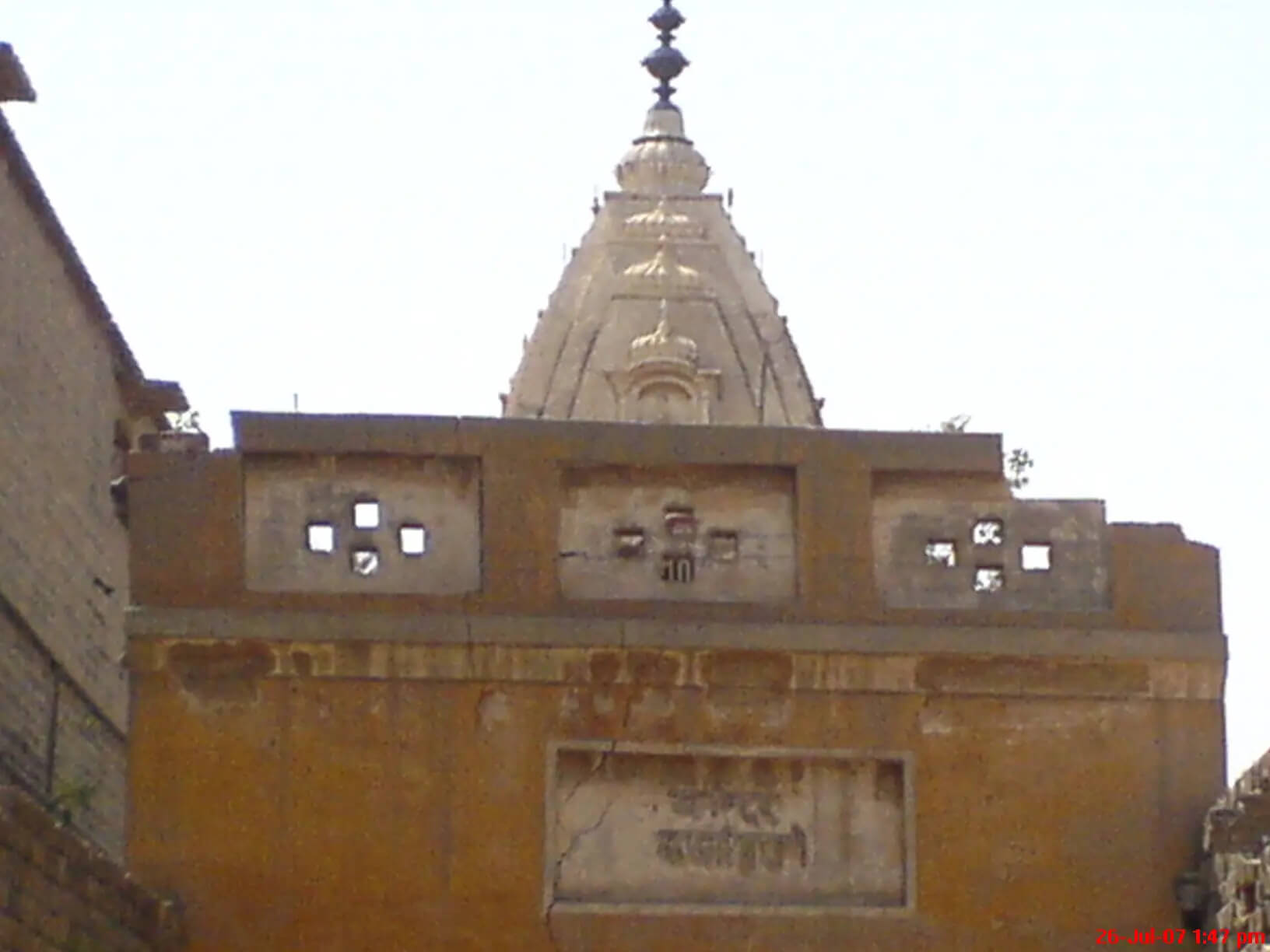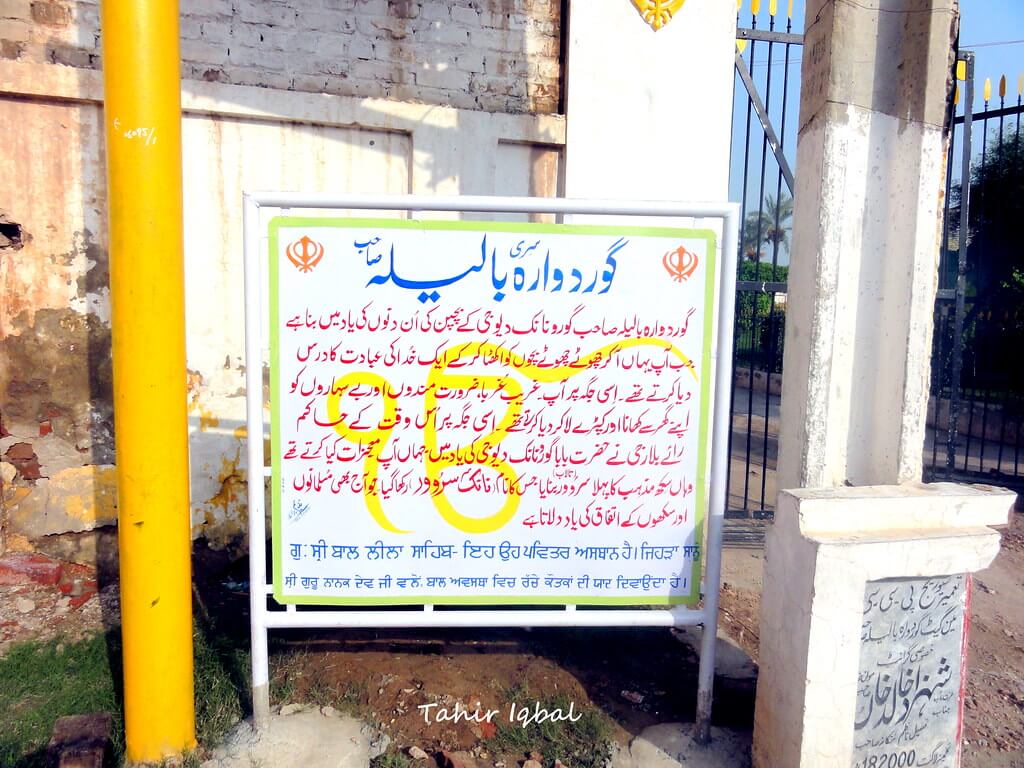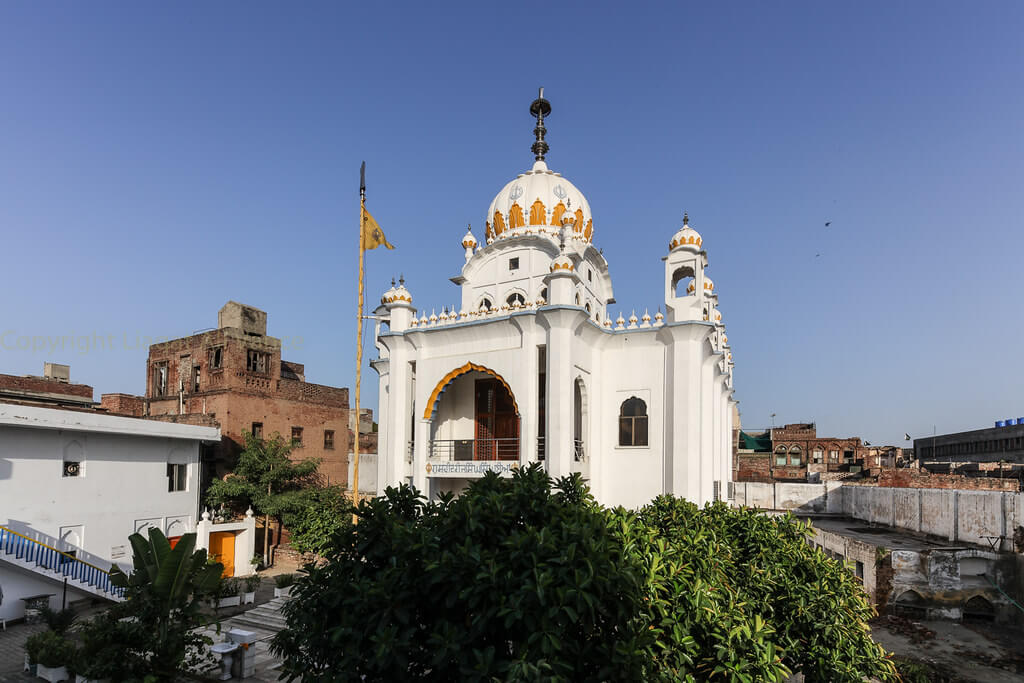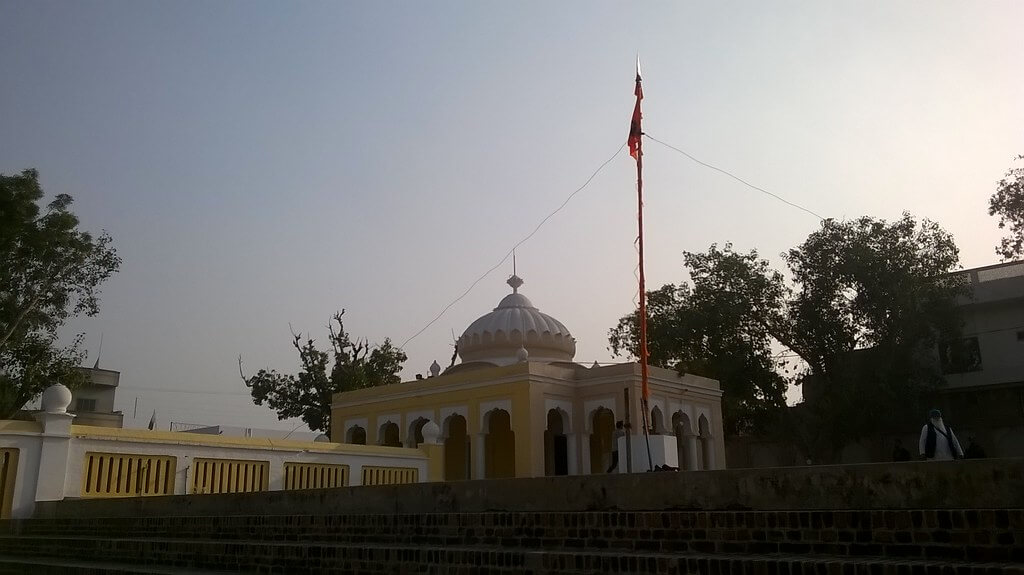Gurdwaras in Pakistan are significant symbols of the vivid heritage of Sikhism. These majestic monuments are not only important to Sikhs but also serve as reminders of Sikhism’s rich history and heritage. Each Gurdwara in Pakistan tells a distinct tale, sending tourists back in time and providing a look into the beautiful past.
One such example is the Nankana Sahib Gurdwara, one of Pakistan’s most well-known Sikh gurdwaras. It is highly revered by Sikhs since it is considered to be the birthplace of their first Guru, Guru Nanak Dev Ji. Every year, hundreds of devotees visit this Gurdwara to honor their spiritual guru. Similarly, other Gurdwaras in Pakistan, such as Panja Sahib and Kartarpur Sahib, have a high religious importance for Sikhs due to their link with significant events in their history.
Furthermore, these hallowed sites serve not just religious reasons, but also as important monuments that connect Sikhs to their cultural history. They provide a venue for communal gatherings, allowing people from all backgrounds to join together to celebrate festivals like Vaisakhi or remember historical events like martyrdoms or the births of famous leaders. That is why the historical significance of Gurdwaras in Pakistan should not be underestimated.
List of Gurdwaras in Pakistan
The gurdwaras in Pakistan are mentioned below:
- Gurdwara Nankana Sahib
- Gurdwara Darbar Sahib
- Gurdwara Panja Sahib
- Gurdwara Dera Sahib
- Gurdwara Rori Sahib
- Gurdwara Kali Devi
- Gurdwara Bhai Joga Singh
- Gurdwara Bal Lilah
- Gurdwara Diwan Kaura Mal
- Gurdwara Shahid Ganj Bhai Taru Singh
- Gurdwara Kiara Sahib
Gurdwara Nankana Sahib
Gurdwara Nankana Sahib, located around 75 km southwest of Lahore, is one of Pakistan’s most important Sikh holy places. It commemorates Baba Guru Nanak’s birthplace and is thought to be a replica of his childhood house, where he began teaching the faith.
The Gurdwara’s large property is designed in a rectangular layout and includes a major square, a holy water pool known as Saroor Sahib, Sardar Lachman Singh’s tomb, and Sikh Shaheedi within a glass chamber. The walled compound also has around 500 rooms for Sikh pilgrims, as well as a large kitchen, dining room, and seating space where devotees may dine and rest.
Furthermore, the facade of the Gurdwara is painted in shades of bright yellow. A spectacular golden door, which serves as the primary entrance to the hallowed location, is intricately engraved with holy scripture and Sikh guru representations. The main square also features a memorial to the Punjabi Sikh Sangat, as well as an old tree planted in its center.
Meanwhile, the main building within Gurdwara Nankana Sahib is two stories tall and includes white domes with flower bases and inverted lotus emblems. It’s also worth noting that a major area of the property is roofless, with the floor composed of spotless white marble that sparkles brightly in the light.
Gurdwara Darbar Sahib
Gurdwara Dera Sahib, also known as Gurdwara Kartarpur Sahib, is one of the world’s greatest Sikh holy places. It is located in the picturesque town of Kartarpur in Tehsil Shakargarh. It was also where Baba Guru Nanak lived his last years.
In 2019, the Pakistani government opened the 4.2-kilometer-long route connecting the Indian town of Dera Baba Nanak to the Narowal district’s Kartarpur Sahib Gurdwara. This corridor of “international peace and harmony” allows Sikh devotees from across the border to visit the Gurdwara without requiring a visa. To make their stay more comfortable, Pakistani officials supplied the pilgrims with hotel amenities.
Gurdwara Darbar Sahib has an area of approximately 400 acres, including the main structure, which is 42 acres. The remainder of the property is reserved for water pools, communal kitchens, greenery, hotels, handicraft stores, parking lots, and other amenities. The compound also includes a holy well, which has recently been refurbished and offered to pilgrims. This is the same well that Guru Nanak used to irrigate the crops in his last years. Its water, known as Amrit Jal, is revered by the Sikhs.
Furthermore, the Gurdwara’s main compound is built like a rectangle, with four visually distinct entry points featuring finely sculpted marble archways. Furthermore, except for the center building in the huge courtyard, the whole space is roofless.
Gurdwara Panja Sahib
Gurdwara Panja Sahib, which was built between 1780 and 1839 during Maharaja Ranjit Singh’s reign, is one of Pakistan’s most revered holy places for Sikhs. This magnificent edifice is located near Hassan Abdal, approximately 48 kilometers from Rawalpindi. It is also seen as a symbol of peace and harmony. Both Hindus and Sikhs make pilgrimages to this Gurdwara twice a year.
Furthermore, this site has a distinct history. In Punjabi, the word ‘Panja’ refers to the palm, from whence the Gurdwara derives its name. According to legend, Guru Nanak meditated at this location. Another holy man, who was meditating on top of the mountain, tossed a rock at him. However, the founder of Sikhism was able to stop the rock with his palm, leaving an imprint on it. That rock is still present within the Gurdwara and has retained its original form.
The architecture of the Gurdwara Panja Sahib is likewise quite impressive. The spectacular structure comprises of a pilgrims’ dormitory, a huge courtyard, a pool, and the main temple. The hostel has 376 rooms, and all visitors get free meals from the temple’s kitchen for the length of their stay. In 2011, a new dining hall was erected in the main building, with a capacity of over 1,000 people.
Gurdwara Dera Sahib
Gurdwara Dera Sahib, an epitome of Sikh architectural history, is located in the medieval Walled City of Lahore. This Gurdwara attracts a great number of tourists each year due to its proximity to the Badshahi Mosque and the Lahore Fort, two of the city’s most popular tourist destinations. Guru Hargobind erected it in 1619, and Maharaja Ranjit Singh extended it later.
This Gurdwara was built to commemorate the martyrdom of Guru Arjan Dev Ji, who drowned in the Ravi River, which used to run near the spot. He was the fifth Guru of Sikhism and the first to compile the Adi Granth or fundamental Sikh text. The sacred book is still kept at Gurdwara Dera Sahib and is regarded as a living Guru, preceding the line of 10 human Gurus that concluded with Guru Gobind Singh Maharaj.
Meanwhile, the architecture of this regal edifice is a great blend of classic Mughal and Sikh forms. Its golden dome has elaborate artwork, including paintings, multi-foil arches, and in-lay works, which are influenced by Mughal Emperor Shah Jahan’s monuments. Its gorgeous dome ceiling is also embellished with paintings of Guru Nanak and flower embellishments.
Gurdwara Rori Sahib
Gurdwara Rori Sahib, a red brick structure, is one of the most renowned attractions near Gujranwala. The holy site is located near Eminabad, about 15 kilometers from the City of Wrestlers. It was constructed by Maharaja Ranjit Singh to commemorate the location where Guru Nanak once sought sanctuary.
The main structure of the Gurdwara has three stories and three enormous domes. The entire construction is composed of cut and molded bricks, which enhances its architectural splendor. Although not as enormous as the other Gurdwaras on our list, it is nevertheless rather impressive. However, while the principal structure is composed of red bricks, the secondary construction is white and consists of a single hall. It also boasts a big white dome that is noticeable from afar. The Gurdwara property features a rectangular courtyard that links the entrance to the temple. The facility also has an ablution pool.
Furthermore, ‘rori’ refers to pebbles or dirt in Punjabi. According to Sikh legend, Guru Nanak spent the night at this location, surrounded by mounds of stones and rubbish. Though it is unclear when the Gurdwara was founded, historians assume it was built more than 200 years ago.
Before partition in 1947, the beautiful green landscape surrounding Gurdwara Rori Sahib was known for its vibrant Baisakhi celebration. This hallowed place continues to attract a large number of Sikh and Hindu pilgrims.
Gurdwara Kali Devi
Gurdwara Kali Devi, another prominent Sikh shrine in Pakistan, is located on the main road past the Topan Wala crossroads in Dera Ismail Khan. This ancient building’s architecture differs significantly from that of most other Gurdwaras in the country since it lacks marble floors and enormous domes. Instead, it resembles an ancient Hindu temple, as it originally was.
According to folklore, this Gurdwara was previously a shrine dedicated to the Hindu goddess Kali. When Guru Nanak visited the village, he opted to keep his distance from the sacred monument. However, it is believed that as he entered the town, the idol toppled to the ground. The priest in the temple quickly snatched it up, but it dropped again. They finally discovered that a holy man had come into the neighborhood, and they worried that his presence was causing the statue to fall.
When the priest came to ask about the occurrence, Guru Nanak revealed the fundamentals of the Sikh faith to him. Soon, the priest became one of his students, and idol worship was banned in the temple. After a few years, Hindu priests returned to worship the idol in the same structure, giving it the name Gurdwara Kali Devi.
Gurdwara Bhai Joga Singh
Gurdwara Bhai Joga Singh was built by Hari Singh Nalwah, a major general in Maharaja Ranjit Singh’s army, and is one of the most well-known historical landmarks in Peshawar’s ancient walled city. It is situated in Mohalla Jogan Shah Qissa Khawani, near the renowned Namak Mandi. Although the sacred place was suppressed after division, the Pakistani government restored it to Sikh pilgrims in 1980. However, it is in desperate need of repairs and renovations.
This building has been there for nearly 200 years. It was created by a Peshawar native and Guru Bhai Joga Singh’s buddy. Years later, after the Khalsa Army annexed the city, Nalwah reconstructed the structure. Shortly before the split, a wealthy Sikh transporter named Bahi Jay Mal rebuilt and extended the property, giving it its current appearance and form.
Gurdwara Bal Lilah
Gurdwara Bal Lilah is located 400 yards from the holy sanctuary of Janam Asthan. Rai Bular, the lord of Talwandi, created the holy pond Nanaksar, which houses this Gurdwara. As the name suggests, this blog is about the Guru’s fantastic journey during his early infancy.
The Guru used to convey the enlightenment of the Nama into the brains of his friends while playing with them. Previously, the Gurdwara possessed 120 acres of land and a little monetary endowment. Before the Saka of 1921, the Nirmala Singhs were in charge of arranging this Gurdwara. Besides Tirath Singh, the Mahant, there were 37 additional patidaars. During the Gurdwara Sudhar Movement, the Gurdwara fell under panthic control. This Gurdwara was in panthic hands till 1947, but following partition, the Pakistan Waqf Board has been serving it. The Sarovar adjacent to the Gurdwara has dried up, and the Gurdwara is only open when Sikhs visit it. There is no setup for Parkasha in Guru Granth Sahib. Only the building is secure and sound.
Diwan Kaura Mal
Diwan Kaura Mal had this Gurdwara constructed in 1748. It was rebuilt by Maharaja Ranjit Singh, who also expanded and correctly lined the Sarovar Nanaksar. The current three-story domed edifice was constructed in the 1930s and 1940s and completed just before 1947.
Shahid Ganj Bhai Taru Singh
The Shahidi Asthan of Bhai Taru Singh Ji is located near Naulakha Bazar. Bhai Sahib used to support his widowed mother and sister via honest work and also aided poor Sikhs. The authorities of the day despised his humane actions. Bhai Sahib Ji was imprisoned for the offense, tempted, and tormented, but he refused to give up and stayed faithful. The Qazi issued an edict to scalp him alive. At the scene, Bhai Taru Singh’s scalp was taken with a hoe, yet he kept saying Waheguru. Bhai Taru went for his heavenly paradise on Asu 13th, 1802 BK. (A.D. 1745), although as he had previously stated, Zakaria Khan had died earlier. The devotees had a Gurdwara erected at this location. During the Sikh Raj, this Gurdwara received a large Jagir. When the S.G.P.C. took over the maintenance of this temple, Bhai Asher Singh, who subsequently became Jathedar of Sri Akal Takhat, was entrusted with its upkeep. Because of its unique traits, Bhai Sahib became quite important, however after partition, we were forced to abandon this sacred site. The Gurdwara still exists, but its management is under the Pakistan Waqf Board.
Gurdwara Kiara Sahib
Gurdwara Kiara Sahib, located near Gurdwara Janam Asthan in Nankana Sahib, Pakistan, is a major Sikh site. It is historically significant since it is thought to be the location where Guru Nanak Dev Ji spent his early years and began his journey to spread the message of Sikhism.
The term “Kiara” means “chamber” or “room” in Punjabi. It is stated that this was the chamber where Guru Nanak Dev Ji was born, and his cradle, known as “Cunni Sahib,” is still kept here. The Gurdwara Kiara Sahib is also called the “Karam Dharam Sahib.”
The architecture of this gurdwara represents Sikhism’s simplicity while also honoring Guru Nanak Dev Ji’s life and teachings. The local Sikh community maintains the gurdwara’s buildings, which are open to all visitors regardless of religious views.
Every year, thousands of Sikh pilgrims from all over the world visit Gurdwara Kiara Sahib to pay their respects and seek blessings. The gurdwara represents togetherness, peace, and religious harmony, reflecting the qualities that Guru Nanak Dev Ji advocated throughout his life.


